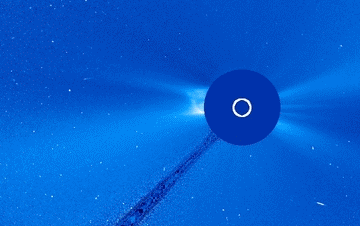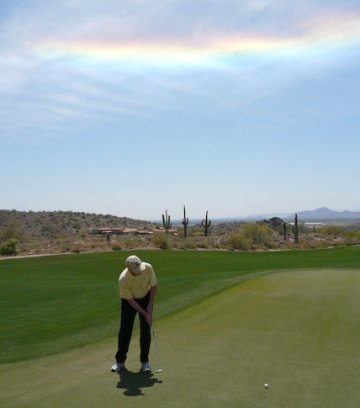| VENUS TO DISAPPEAR DURING METEOR SHOWER: On Wednesday morning, April 22nd, the planet Venus will disappear behind the Moon during the peak of the Lyrid meteor shower. It's a show you won't want to miss. Get the full story from Science@NASA. EXPLOSION ON THE SUN: A billion-ton cloud of hot magnetized gas has just left the sun. The Solar and Heliospheric Observatory (SOHO) recorded the explosion at the end of the day on April 17th: 
The bright coronal mass ejection (CME) is not heading for Earth, so there will be no geomagnetic effects from the explosion. But it does remind us that sunspots are not required for solar activity. The source of the blast appears to be an erupting prominence high above the sun's northeastern limb. The sun may be blank, but it is not quiet. Monitoring is encouraged. more images: from Alan Friedman of Buffalo, New York; from Leslie Marczi of Welland, Ontario, Canada; from James Kevin Ty of Manila, the Philippines; from Fabio Acquarone of Caramagna, Liguria, Italy; from Michael Buxton of Ocean Beach, California; GOLFER'S LIGHT SHOW: "While golfing in Scottsdale, Arizona, yesterday I was treated to a bright light show in the sky," reports Gary J. Cooper. It was so distracting, he almost missed his putt: 
Cooper witnessed a circumhorizontal arc--a rainbow-colored band of light caused by the sun shining through plate-shaped ice crystals in cirrus clouds. They are a phenomenon of spring and summer, forming only when the sun is more than 58 degrees above the horizon. As the name suggests, these arcs tend to hug the horizon, showing themselves most often over flat, sunny places like desert golf courses. Look Fore! them, the next time you're on the green.
April 2009 Aurora Gallery
[previous Aprils: 2008, 2007, 2006, 2005, 2004, 2003, 2002]
Explore the Sunspot Cycle | 
